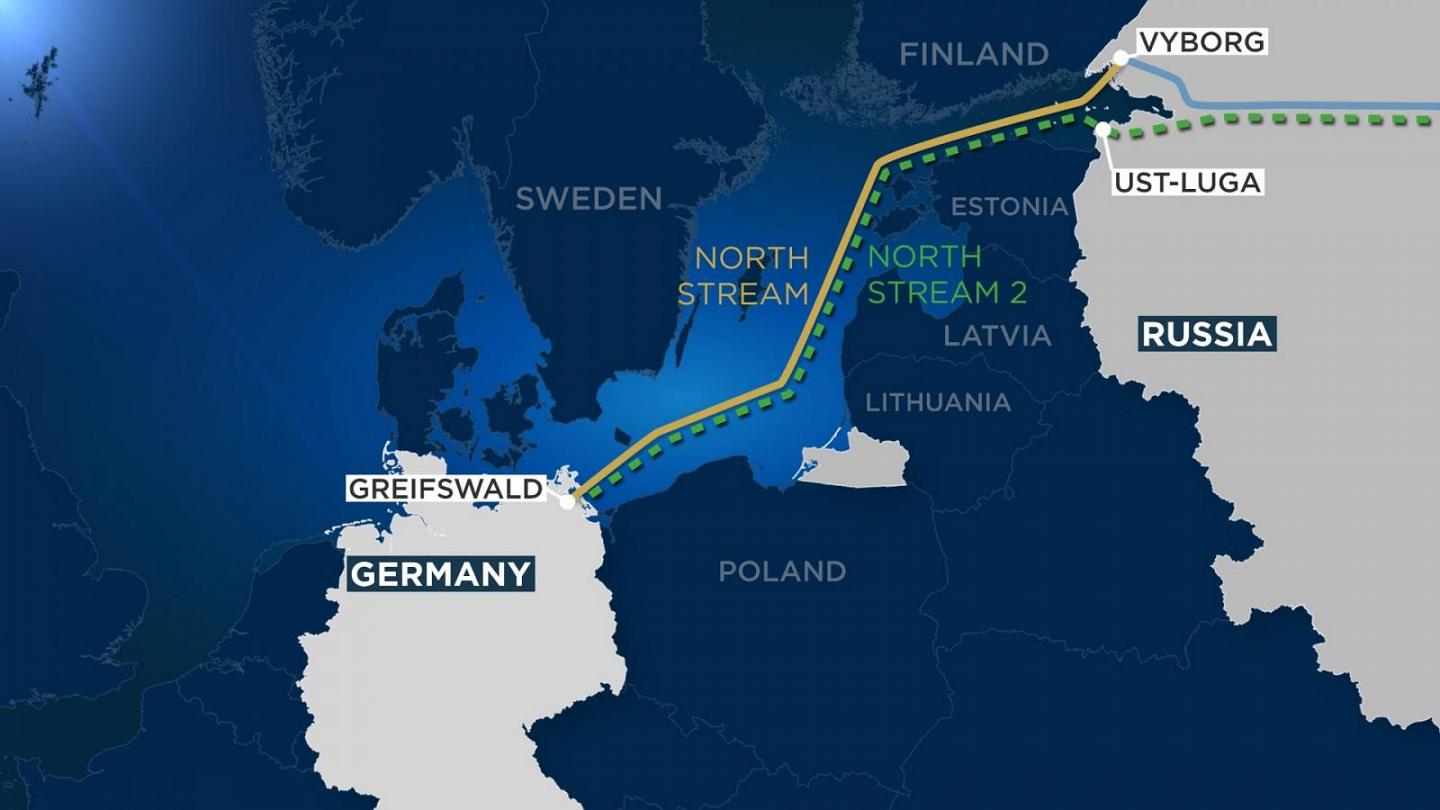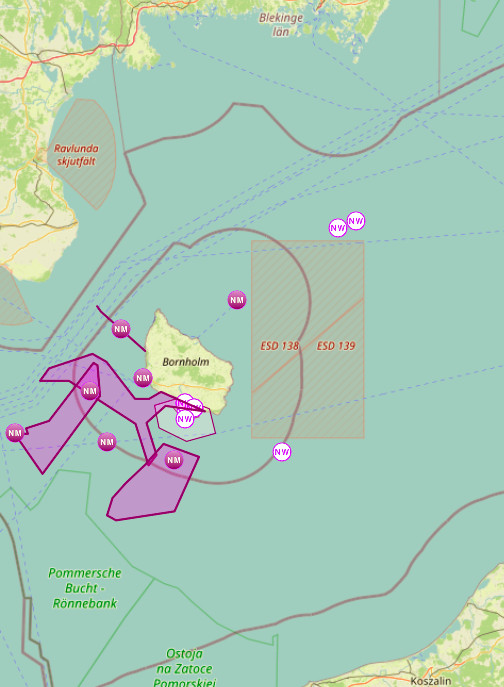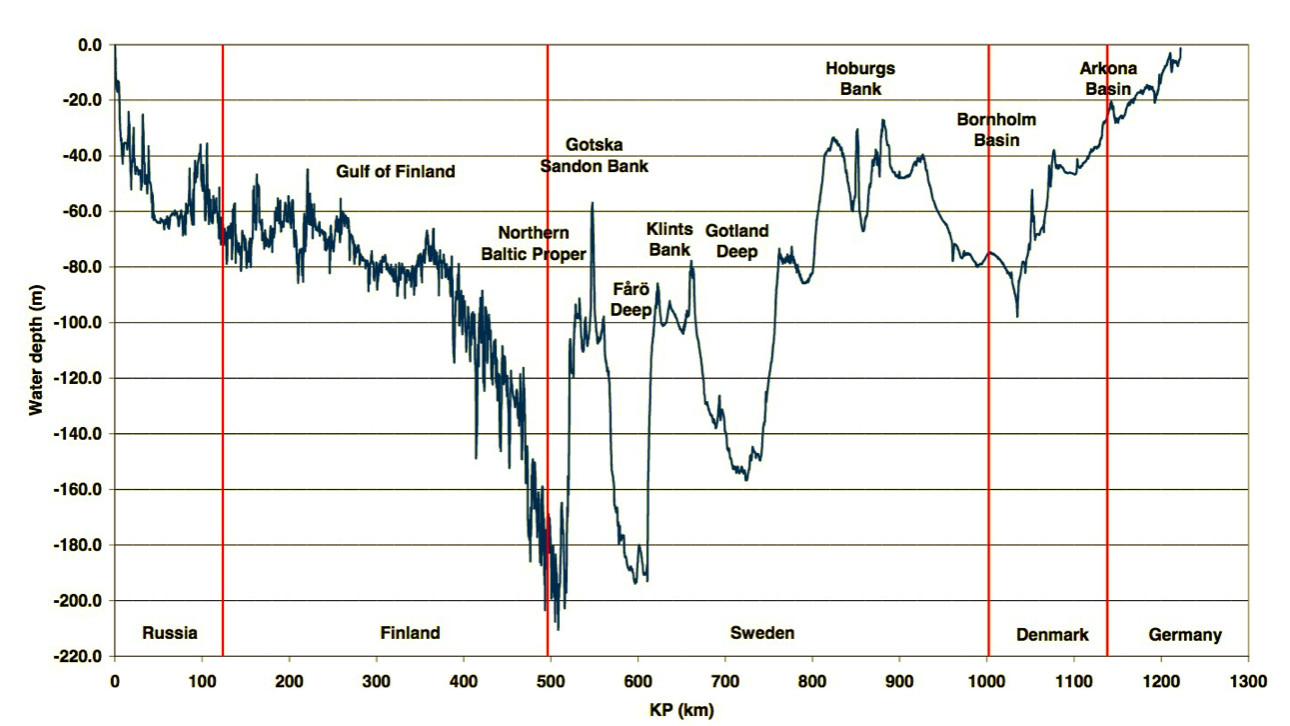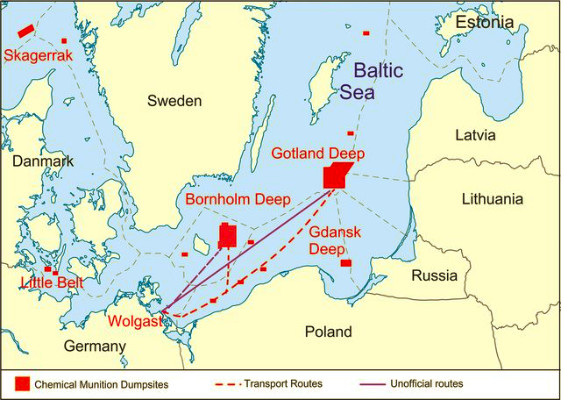
Reports came in late yesterday, (as reported in the German media) of a dramatic depressurisation of Nord Stream 2 (NS2), an undersea gas line connecting Russia and Germany. This was followed later by news that Nord Stream 1 (NS1) has also depressurised.
The pressure in NS2 plummeted from 105 bars1 to just 7 bars. Leaking gas bubbles into the Baltic Sea have been seen near the Danish island of Bornholm.
NS1 is also leaking gas bubbles in two different places, one in Swedish economic zone and one in Danish economic zone. Danish air force aircraft have visually confirmed the NS2 leakages. https://www.berlingske.dk/samfund/trykket-er-faldet-til-nul-i-nord-stream-1-efterforskning-indledt
This comes at a time of heightened geopolitical tensions and severe energy crisis in Europe, owing to the conflict in Ukraine and also the repercussions of the imposition of sanctions against by the EU.
Both pipelines are operated by a consortium majority-owned by Russian gas giant Gazprom. Neither NS2 and NS1 were in service, although filled with gas. Operation of NS1 was suspended last month by Gazprom, citing technical maintenance & safety issues. NS1 had been in service since 2011.
What is known so far:
- Three strands of the two Nord Stream gas pipelines system have been damaged and all supplies have stopped.
- WELT has suggested that a leak in the recently built pipeline is most likely the result of sabotage.
- The NS2 leaks are in relatively shallow waters (~50-80m depth) of the Baltic Sea, outside the Danish territorial waters. Navigational sea & air warnings & exclusions zones have been imposed by Denmark & Sweden. https://www.reuters.com/business/energy/sweden-issues-warning-two-gas-leaks-nord-stream-1-pipeline-2022-09-27/
- German federal authorities on pressure drops of Nord Stream pipelines: “Our imagination no longer yields a scenario that is not a targeted attack.” https://www.tagesspiegel.de/wirtschaft/druckabfall-in-beiden-leitungen-gemeldet-nord-stream-pipelines-moglicherweise-durch-anschlage-beschadigt-8687140.html
- Operator Nord Stream AG declared ‘Unprecedented’ damage.

Image 1: Approximate locations of leaks (white circles – ‘NW’ to the right of Bornholm). Source: Danish Maritime Authority
To note
1. German protests
Thousands of people in various German cities have recently protested Olaf Scholz’s policy and the huge increase in overall energy, but particularly gas prices. The protesters also demanded an end to sanctions on Russia and called for the operational restart of NS2 as well.
2. Washington
Washington’s stance on the construction & operation of NS2 has been one of intense animosity and this has been the case for a long-time, long before the events of February 2022. (More on this later in the next sitrep).
- President Biden’s statement February 2022
Biden “If Russia invades…then there will be no longer a Nord Stream 2. We will bring an end to it.”
Reporter: “But how will you do that, exactly, since…the project is in Germany’s control?”
Biden: “I promise you, we will be able to do that.”
NBC Video clip source: https://twitter.com/ABC/status/1490792461979078662
3. Speculation in Western media
German media Focus’ take on who is likely to have sabotaged the pipeline is rather capricious to say the least:

Polish branch of ‘Euro Pipe’
A new 900km pipeline “Baltic Pipe” will be opened today, a branch connecting from the Norway-Germany ‘“Europipe”. This branch bypasses Germany.
Water depth

Image 2: Profile of Baltic Sea seabed and pipeline route location
The approximate locations of the leaks are in the Bornholm Basin area (mean depth of 43m), closest to the island. The depth is shallow enough for specialised diving operations as well as the use of Remotely Operated Vehicles, (as was the case for the construction of both pipelines). Bathymetry map: https://www.io-warnemuende.de/profile-of-the-baltic-sea.html
The shallow area of the Bornholm Strait separating the Arkona Basin from the Bornholm Basin has a maximum depth of 45 metres. [3]
Surveying and ordnance clearance
The first step to building an offshore pipeline is to conduct extensive surveys of the seabed. In the case of NS2, this involved detailed seabed survey of areas potentially harmful to the building and operation of a pipeline. This was certainly the case for NS1 and NS2, especially in areas that were used to dump explosives and chemicals.
The Baltic Sea was the scene of maritime battles, laying of mines during WW2. Additionally, areas of it were used as a dumping ground for obsolete, damaged, or expired munitions & chemicals. This was widely carried out following the end of both world wars. “
It is estimated that the Baltic Sea alone has around 50,000 tonnes of chemical munitions, 500,000 tonnes of conventional weapons, and 10,000 wrecks on its seabed.” If you look at Image 1 of the locations of the leaks, there is a box with red lines. It is the red box in the image below and neither NS1 nor NS2 went through this.

Pipeline projects are extremely complex & long-term intensive activities: 1. negotiations, 2. route planning & surveys, 3. negotiations for permits with countries, detailed survey & work clearing the route of hazards.
It is well-known that there is ordnance that pose a threat to pipeline installation, hence just for NS1 in one area: https://www.nord-stream.com/press-info/press-releases/nord-stream-preparing-for-munitions-clearance-366/
NS1: “Engineering analysis based on the effects of underwater explosion has shown that a mine free “security corridor” 25 metres either side of the pipeline is required to ensure its integrity.
Baltic Sea states’ navies have routinely carried out mine /ordnance clearing to ensure safety, especially in the vicinity of maritime infrastructure.
Further detailed commentary and background information will be provided in another article.
Footnote
1. Reuters has stated 300 bars.
2. Chemical munition dump sites in the Baltic Sea (courtesy of Jacek Bełdowski, CHEMSEA project 2013). https://www.sciencedirect.com/science/article/abs/pii/S0967064515000284
3. ESPOO report, Chapter 8
By The Lookout
Republished by The 21st Century
The views expressed in this article are solely those of the author and do not necessarily reflect the opinions of 21cir.com
